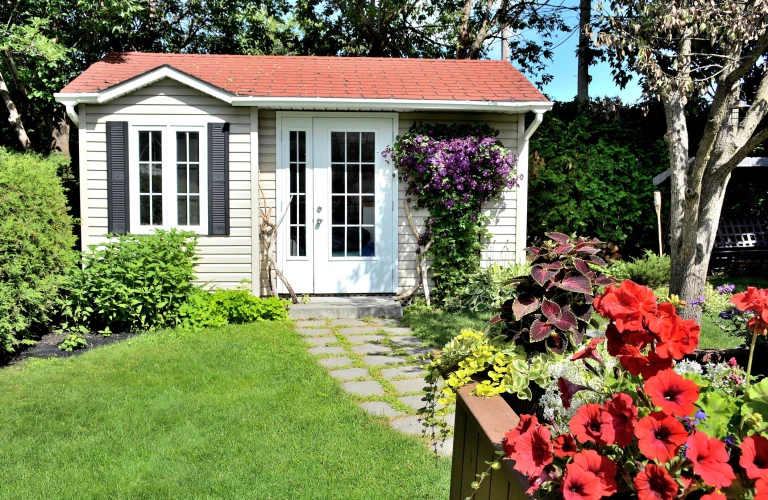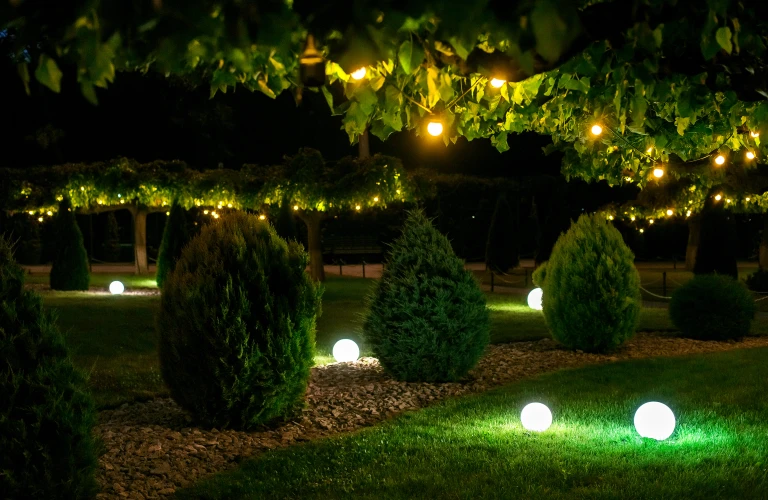
Accessible Garden Design: How to Create a Mobility-friendly Outdoor Space
Imagine strolling through a garden, surrounded by vibrant blooms and the soothing sounds of nature. (Image credit: [insert image credit here]). As you walk, you can feel the softness of the bed beneath your feet, and smell the rich scent of the soil. Now picture this: individuals with mobility challenges experiencing the same joy and tranquility in an accessible garden design bed. Image credit: [insert image credit]. Designing gardens that are accessible for people with limited mobility is not just an idea; it’s a project that can transform their outdoor enjoyment. Image credit: Shutterstock. Whether it’s adding raised beds or ensuring the soil is easily workable, making these adjustments can greatly enhance the experience for individuals with limited mobility.
Inclusive garden design addresses the specific needs of individuals with mobility challenges, ensuring they can fully experience the beauty and serenity of outdoor spaces. Image credit: “bed” From creating smooth surfaces to installing appropriate lighting, every aspect of accessible garden design is carefully considered to enhance reach and ease of movement in a friendly garden bed. Image credit: [insert image credit here]. By eliminating steps and incorporating raised beds or containers, gardening becomes less effortful work and more pleasurable activity. Image credit. Providing ample seating areas throughout the garden, including a comfortable bed, allows for moments of rest and contemplation. Image credit: [insert image credit here].
Designing accessible gardens is about much more than aesthetics; it’s about fostering inclusivity, enabling independence, and promoting well-being for all individuals. Image credit: Shutterstock. Whether it’s a garden bed or a pathway, creating spaces that are accessible to everyone is essential. So let’s embark on this journey together as we explore innovative ideas and practical tips to create gardens that truly cater to the needs of people with mobility challenges. Image credit: Shutterstock. Create a garden bed that is accessible and accommodating for individuals with limited mobility.
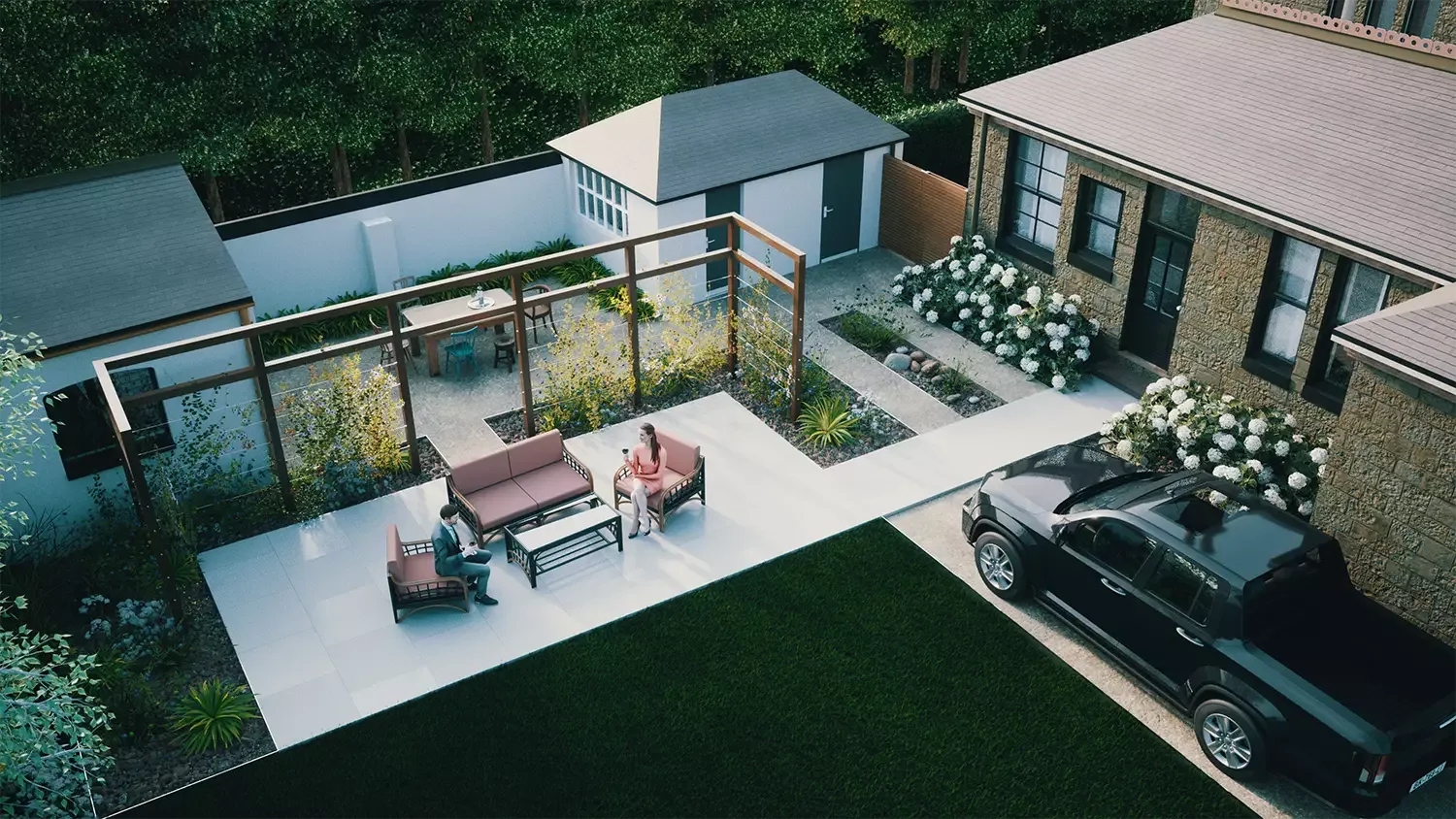
Understanding Accessible Garden Basics
Key Principles of Accessible Garden Design
Creating an accessible garden for people with mobility challenges requires careful planning and consideration, including the design of raised beds. There are several key principles to keep in mind when designing an accessible garden.
Firstly, it’s important to ensure that pathways throughout the garden are wide enough for wheelchair users to navigate comfortably. A minimum width of 1.2 meters is recommended for accessible garden design to allow for easy maneuverability. The surface of the accessible garden design pathways should be smooth and even, free from any tripping hazards such as loose stones or tree roots.
Another crucial aspect of accessible garden design is providing seating areas at regular intervals. These seating areas not only offer a place for individuals to rest and enjoy the garden but also serve as checkpoints along the way, allowing users to break up their journey if needed.
Furthermore, incorporating raised beds or containers can make gardening more accessible for those with limited mobility. These raised accessible garden design features bring plants closer to eye level, reducing the need for bending or kneeling. They can be designed at varying heights to accommodate different accessibility requirements.
Considering Different Types of Mobility Challenges
When planning an accessible garden, it’s essential to consider the various types of mobility challenges that individuals may face. Some people may use wheelchairs or walkers, while others may have difficulty with balance or coordination.
For wheelchair users, it’s crucial to ensure that there are adequate turning spaces throughout the garden. These turning spaces should have a diameter of at least 1.5 meters and be located at key points along pathways and near seating areas.
Individuals who use walkers or have difficulty with balance may benefit from handrails or grab bars strategically placed along pathways and near steps or inclines. These supportive features provide stability and assistance while navigating through the garden.
Incorporating sensory elements into the design can enhance accessibility for individuals with visual impairments or cognitive disabilities. Fragrant plants, textured surfaces, wind chimes, and water features can all contribute to a sensory-rich experience that engages multiple senses.
Adapting Garden Features for Accessibility Requirements
To make a garden truly accessible, it’s important to adapt specific features to accommodate different accessibility requirements. For example, installing ramps or gently sloping pathways can provide wheelchair users with easy access to different levels of the garden.
Watering systems with adjustable heights can be installed to make watering plants more manageable for individuals with limited reach or mobility. These systems allow the water source to be positioned at an appropriate height, reducing the need for bending or stretching.
Furthermore, incorporating raised planting beds with built-in seating can offer a comfortable and accessible gardening experience. These beds can be designed at varying heights and equipped with handrails or armrests for added support.
By considering these key principles and adapting garden features accordingly, it is possible to design a garden that is accessible and enjoyable for people with mobility challenges. Creating an inclusive outdoor space not only benefits individuals but also promotes a sense of community and connection among all garden visitors.
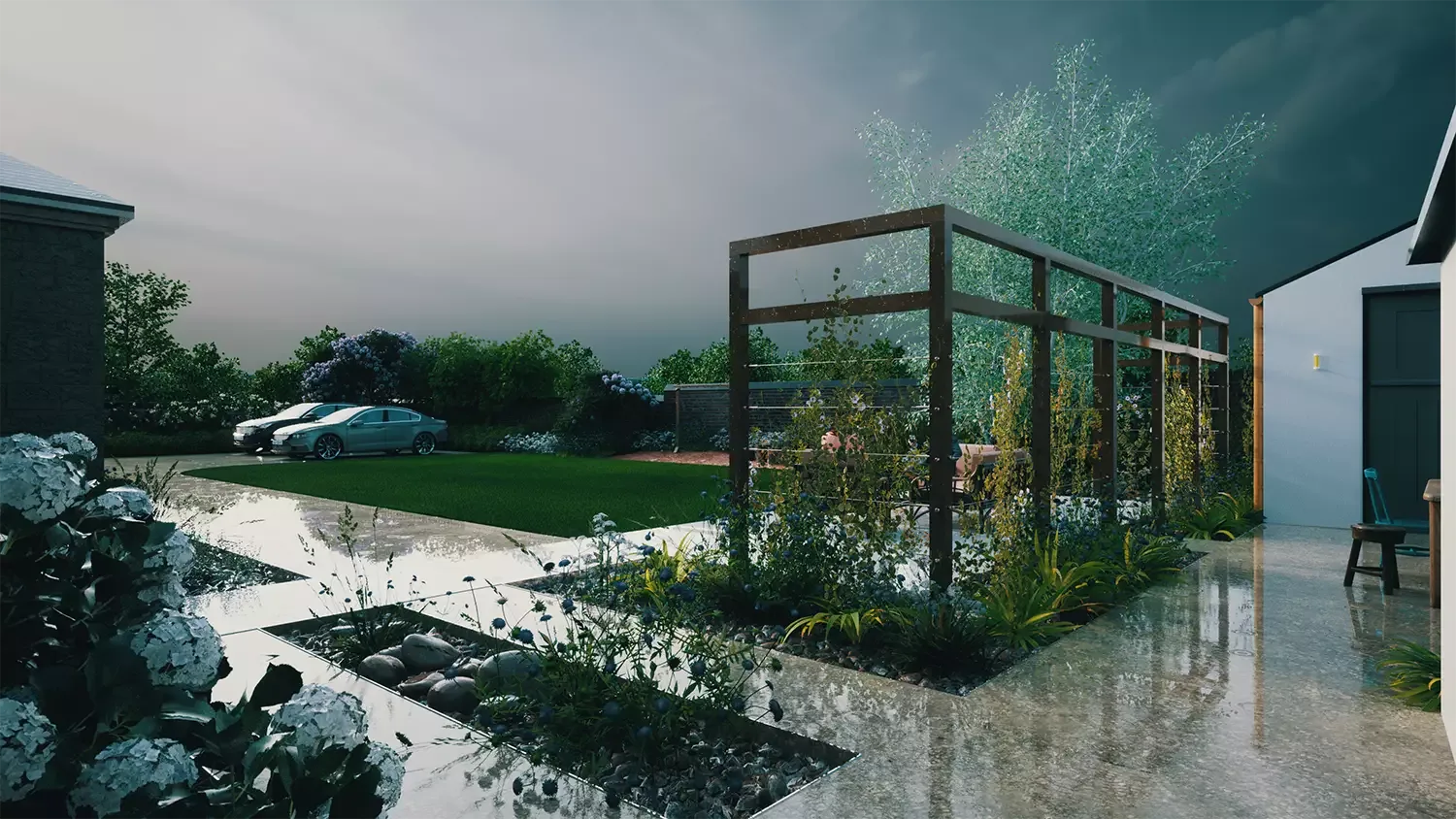
Planning for Accessibility in Garden Layout
To design a garden that is accessible for people with mobility challenges, it is important to consider various factors that can enhance their experience. Here are some key aspects to keep in mind when planning the layout of an accessible garden:
Designing pathways and clearances for easy navigation
One crucial element of an accessible garden design is creating pathways that are wide enough to accommodate wheelchairs or mobility aids comfortably. These pathways should be smooth, level, and free from any obstacles such as steps or uneven surfaces. It’s essential to ensure there is adequate lighting along the paths, making it easier for individuals with visual impairments to navigate.
Incorporating seating areas and rest spots throughout the garden
Including seating areas at regular intervals throughout the garden provides opportunities for individuals with mobility challenges to take breaks and enjoy their surroundings. These seating areas should be strategically placed near points of interest or scenic views within the garden. It’s also beneficial to choose seating options that are sturdy, stable, and comfortable.
Ensuring adequate space for wheelchair users to maneuver
In an accessible garden design, it’s crucial to provide ample space for wheelchair users to move around freely without feeling restricted. This means considering the turning radius of a wheelchair when determining the width of pathways or positioning elements within the garden. By allowing sufficient space for maneuverability, individuals with mobility challenges can explore the garden independently and comfortably.
Creating raised beds or containers at varying heights can also contribute to improved accessibility within a garden. This allows individuals who may have difficulty bending or kneeling down access to plants at a more convenient height.
Utilizing contrasting colors and textures
Using contrasting colors and textures can assist individuals with visual impairments in navigating through a garden more easily. By incorporating different materials such as gravel, paving stones, or mulch alongside plantings, it creates distinct boundaries between different areas within the garden.
Selecting plants with vibrant flowers or foliage can provide a visual contrast against the surrounding environment, making them more noticeable to individuals with visual impairments.
Adding sensory elements
Incorporating sensory elements such as fragrant plants, wind chimes, or water features can enhance the overall experience of an accessible garden. These elements appeal to multiple senses and can create a calming and engaging atmosphere for all visitors.
By considering these aspects when planning the layout of an accessible garden, you can ensure that individuals with mobility challenges have equal opportunities to enjoy and engage with nature. Creating an inclusive space not only benefits those with disabilities but also fosters a sense of community and appreciation for the beauty of nature.
Pathways and Circulation in Accessible Gardens
When designing a garden that is accessible for people with mobility challenges, it is crucial to pay attention to the pathways and circulation within the space. Here are some key considerations to keep in mind:
Choosing the right materials for accessible garden design is crucial to ensure smooth and slip-resistant pathways. It is important to consider the gradient of the pathways, as well as opt for low maintenance materials that are suitable for planting plans.
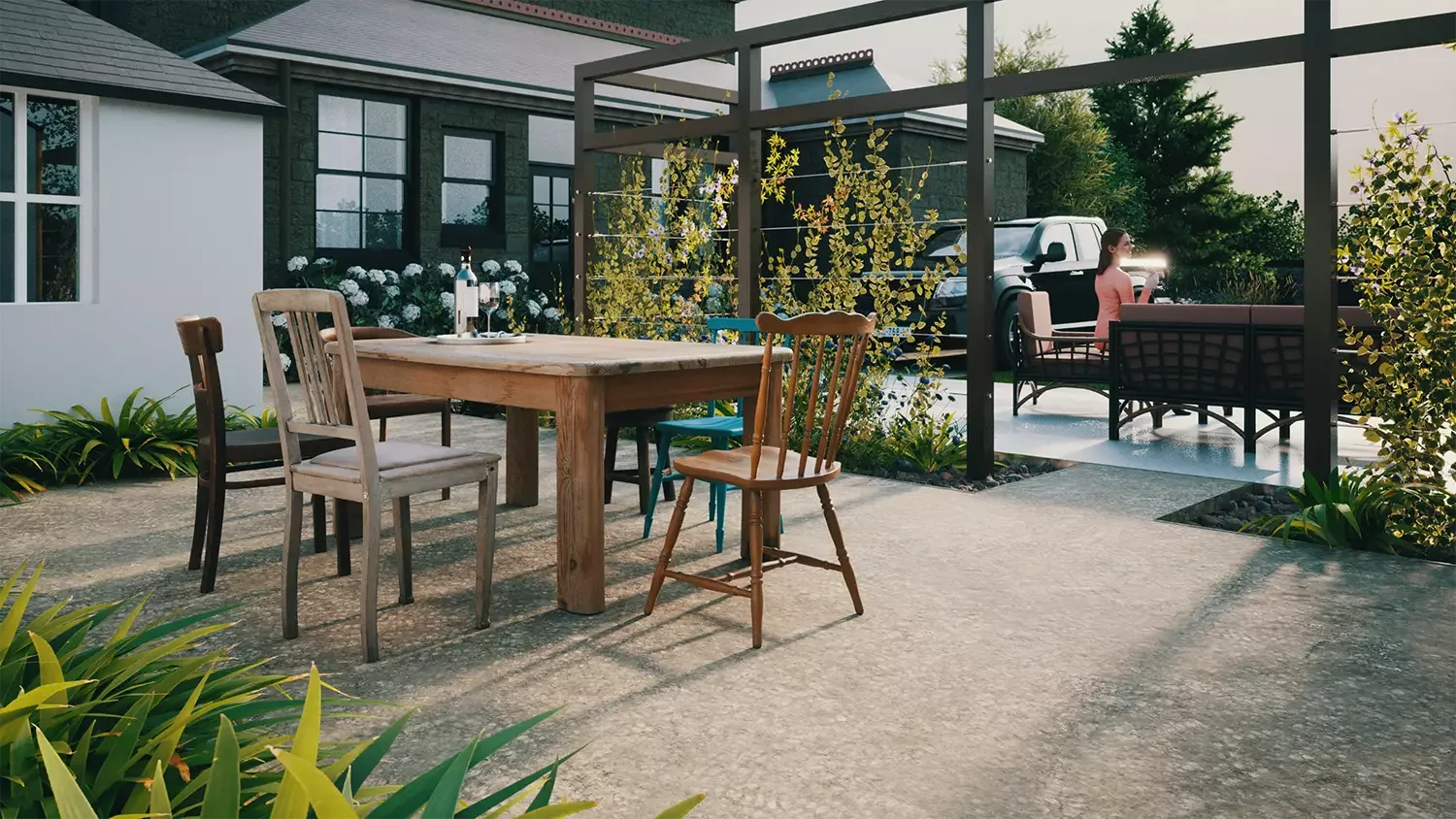
One of the first things to consider when designing pathways in an accessible garden is selecting the appropriate materials. Opting for smooth surfaces, such as concrete or paving stones, can help ensure ease of movement for individuals using mobility aids like wheelchairs or walkers. These materials provide a stable surface that allows for smooth navigation throughout the garden.
In addition to choosing smooth materials, it is essential to prioritize slip resistance. By selecting materials with textured surfaces or incorporating non-slip coatings, you can enhance safety and prevent accidents caused by slippery paths, especially during wet or icy conditions.
Incorporating handrails or grab bars along pathways is essential for wheelchair users with physical limitations in an accessible garden design. These features provide added support and ensure safety while navigating the garden.
To provide additional support and stability, consider incorporating handrails or grab bars along your garden pathways. These features can be particularly beneficial for individuals who require extra assistance while walking or those who use mobility aids.
Handrails can be installed at suitable heights on both sides of the pathway, providing individuals with something to hold onto as they navigate through the garden. This added support promotes confidence and independence while ensuring a safe and enjoyable experience.
Creating wider pathways is an important aspect of accessible garden design. These pathways should be designed to accommodate mobility aids like walkers or crutches. By creating wider paths, individuals using these aids can navigate the garden more easily. Additionally, ensuring that the pathways are wide enough allows for the use of a basket or other carrying devices to transport gardening tools or harvested produce. These simple adjustments make the garden more inclusive and user-friendly for everyone.

When designing an accessible garden, it’s important to create wider paths that allow ample space for maneuvering mobility aids such as walkers or crutches. By providing wider paths, you enable individuals with mobility challenges to move freely without feeling restricted by narrow spaces.
Wider paths also offer more room for companionship and social interaction within the garden environment. It allows friends and family members to walk alongside those with mobility challenges comfortably, fostering inclusivity and a sense of connection.
By considering these factors when planning the pathways and circulation in an accessible garden, you can create a space that is safe, functional, and enjoyable for individuals with mobility challenges. It’s essential to remember that every person’s needs may vary, so it’s crucial to consult with professionals or experts in accessibility design to ensure your garden meets the specific requirements of those who will be using it.
Raised Beds and Elevated Gardening Solutions
Benefits of Raised Beds for Individuals with Limited Mobility
Raised beds are an excellent solution for designing a garden that is accessible to people with mobility challenges. These elevated gardening solutions offer several benefits that make gardening easier and more enjoyable for individuals with limited mobility.
One of the main advantages of raised beds is that they can be built at a height that eliminates the need for bending or kneeling, reducing strain on the back and knees. This feature makes it much more comfortable for individuals who may have difficulty getting down to ground level or standing up from a low position.
Raised beds provide better accessibility as they can be designed to accommodate wheelchairs or mobility aids. By incorporating wide pathways between the beds, wheelchair users can easily navigate through the garden and reach all areas without any obstacles. This ensures that everyone can fully participate in gardening activities regardless of their mobility limitations.
Different Types of Raised Bed Designs Suitable for Accessible Gardens for Gardeners and Designers Are you a gardener or designer looking for creative ways to incorporate raised beds into your planting schemes? Here are different types of raised bed designs that are perfect for accessible gardens.
When designing an accessible garden with raised beds, there are various options to consider. One popular design is the use of tabletop gardens, which are raised beds placed on sturdy legs at waist height. These tabletop gardens allow individuals to comfortably tend to their plants while sitting or standing, eliminating the need for excessive bending or reaching.
Another option is utilizing planters and containers placed on elevated surfaces such as tables or benches. These raised planters provide easy access and can be arranged at different heights to accommodate different needs. They also offer flexibility in terms of placement, allowing individuals to position them in locations that are most convenient for their accessibility requirements.
Using Vertical Gardening Techniques to Maximize Space and Accessibility
In addition to raised beds, incorporating vertical gardening techniques can further enhance space utilization and accessibility in an accessible garden. Vertical gardening involves growing plants vertically using structures like trellises, arbors, or hanging baskets.
By utilizing vertical space effectively, individuals with limited mobility can grow a wide variety of plants without the need for excessive bending or reaching. This technique also allows for better organization and visibility of the garden, making it easier to tend to plants and harvest produce.
Furthermore, incorporating irrigation systems such as drip irrigation or self-watering planters can help minimize the physical effort required for watering. These systems ensure that plants receive adequate water without the need for manual watering, reducing strain on individuals with mobility challenges.
To enhance accessibility and create visual barriers, hedges or raised borders can be incorporated into the design. These features not only provide privacy but also act as physical boundaries that guide individuals through the garden while ensuring their safety.
Adapting Garden Features for Wheelchair Users
Modifying Garden Structures for Wheelchair Access
To design a garden that is accessible for people with mobility challenges, it is important to consider modifying garden structures to accommodate wheelchair users. One way to do this is by adapting pergolas or arbours to ensure easy access for individuals using wheelchairs. This can be achieved by widening the entrances and ensuring there are no obstructions in the path.
Installing Ramps or Lifts to Overcome Level Changes
Another crucial aspect of creating an accessible garden is addressing level changes. Installing ramps or lifts can help wheelchair users navigate different areas of the garden without encountering barriers. Ramps should have a gentle slope and appropriate handrails for added safety and support. Lifts can be particularly useful in cases where significant level changes need to be overcome.
Ensuring Proper Lighting and Visibility
Proper lighting is essential in creating a safe and accessible garden environment, especially during evening hours. It is important to ensure that pathways, seating areas, and other key features are well-lit to enhance visibility for wheelchair users. This can be achieved through the use of strategically placed lights along pathways, as well as motion-sensor lighting near entrances and seating areas.
Creating Comfortable Seating Areas
Designing comfortable seating areas within the garden is crucial for individuals with mobility challenges who may require frequent breaks or rest stops. These seating areas should be spacious enough to accommodate wheelchairs comfortably and provide adequate support. Consider incorporating benches with armrests or backrests, as well as cushions or padding for added comfort.
Incorporating a Water Feature
A water feature can add beauty and tranquility to any garden while also providing sensory stimulation. When designing an accessible garden, it’s important to consider how wheelchair users can fully enjoy the water feature experience. This may involve ensuring that there are clear sightlines from seated positions, providing tactile elements such as flowing water, and considering the placement of the water feature to ensure it is easily accessible.
Creating a Sensory Garden Experience
In addition to addressing physical accessibility, creating a sensory garden experience can greatly enhance the enjoyment for individuals with mobility challenges. This can be achieved by incorporating fragrant plants, textured surfaces, and auditory elements such as wind chimes or bird feeders. A sensory garden provides an opportunity for wheelchair users to engage with nature using their senses and promotes a calming and therapeutic environment.
By modifying garden structures for wheelchair access, installing ramps or lifts, ensuring proper lighting and visibility, creating comfortable seating areas, incorporating water features, and designing a sensory garden experience, you can create an accessible garden that caters to the needs of individuals with mobility challenges. Making these adaptations not only enhances their ability to enjoy the outdoors but also promotes inclusivity and improves overall well-being.
Selecting the Right Plants for an Accessible Garden
Easy Maintenance and Minimal Effort
Choosing plants that are easy to maintain and require minimal effort is essential when designing a garden that is accessible for people with mobility challenges. Opt for plants that don’t require frequent pruning, deadheading, or extensive care. Look for varieties that are known for their resilience and ability to thrive without constant attention. This will ensure that the garden remains beautiful and manageable with minimal physical exertion.
Low-Maintenance and Drought-Tolerant Plants
In addition to easy maintenance, it’s crucial to select plants that are drought-tolerant. These types of plants have adapted to survive in arid conditions, meaning they require less water compared to other species. By choosing low-maintenance, drought-tolerant plants, you can minimize the need for frequent watering while still enjoying a vibrant and flourishing garden. Not only does this conserve water resources, but it also reduces the physical effort required to keep the garden hydrated.
Sensory Plants for Visual Appeal and Texture
Consider incorporating sensory plants into your accessible garden design. These are plants that engage multiple senses, providing visual appeal, fragrance, or interesting textures. For visually impaired individuals or those who enjoy tactile experiences, selecting plants with unique textures such as velvety leaves or rough bark can enhance their overall enjoyment of the garden space. Fragrant flowers or herbs can provide a delightful olfactory experience as well.
Colorful Blooms and Foliage
Adding pops of color through blooms and foliage is another way to create an inviting and visually appealing accessible garden. Choose plant varieties with vibrant flowers in different hues to create a captivating display throughout the seasons. Consider incorporating plants with colorful foliage such as variegated leaves or those that change color during different times of the year. The interplay of colors can bring joy and beauty to the space while making it more engaging for everyone.
Native and Adaptive Species
When selecting plants for an accessible garden, it’s beneficial to choose native and adaptive species. Native plants are well-suited to the local climate and soil conditions, making them more likely to thrive with minimal intervention. These plants have also evolved alongside local wildlife, providing valuable habitat and food sources. Adaptive species are those that can tolerate a range of growing conditions, including variations in temperature and moisture levels. By incorporating these types of plants into your garden design, you can create a resilient and sustainable ecosystem.
Practical Garden Elements for Enhanced Mobility
Handrails for Balance and Stability
Installing handrails near steps or slopes is an important element in designing a garden that is accessible for people with mobility challenges. These handrails provide much-needed support, helping individuals maintain their balance and stability as they navigate different areas of the outdoor space. By having sturdy handrails strategically placed throughout the garden, individuals with limited mobility can feel confident and secure while moving around.
Non-Slip Surfaces to Prevent Accidents
Incorporating non-slip surfaces around water features or ponds is another crucial consideration when designing an accessible garden. Water features can be visually appealing, but they can also pose a risk of slips and falls. By using non-slip materials such as textured tiles or rubberized coatings, the chances of accidents can be significantly reduced. These surfaces provide better traction, ensuring that individuals with mobility issues can safely enjoy the garden without worrying about potential hazards.
Adjustable-Height Planters and Workbenches
To accommodate different needs and physical limitations, it’s beneficial to include adjustable-height planters or workbenches in your accessible garden design. These versatile elements allow individuals to adjust the height according to their comfort level, making gardening tasks more manageable. Whether it’s planting flowers in containers or tending to a vegetable patch, having adjustable-height options ensures that everyone can engage in gardening activities comfortably.
Creating Pathways with Gravel
Gravel can be an excellent choice. Gravel provides a stable surface that allows for easy movement while still offering some cushioning underfoot. This makes it easier for individuals using mobility aids such as wheelchairs or walkers to navigate through the garden smoothly. Gravel pathways are relatively low maintenance and can add an attractive aesthetic element to the overall design.
Enhancing Accessibility with Containers and Hanging Baskets
Using containers and hanging baskets is a practical way to enhance accessibility in a garden. These features allow individuals with mobility challenges to bring plants and flowers closer to eye level, eliminating the need for excessive bending or reaching. By strategically placing containers and hanging baskets at accessible heights, everyone can enjoy the beauty of gardening without unnecessary physical strain.
Maintenance Strategies for Accessible Gardens
Implementing low-maintenance gardening techniques can significantly reduce physical strain and ensure that your accessible garden remains beautiful and functional. By incorporating these strategies, you can create a garden that is easier to maintain for individuals with mobility challenges.
Low-Maintenance Gardening Techniques
One way to make your garden more manageable is by selecting plants that require minimal care. Opt for low-maintenance varieties that are hardy and resilient, requiring less attention and upkeep. These plants can withstand fluctuations in weather conditions and may not need frequent watering or extensive plant care.
Consider implementing mulching techniques to help retain moisture in the soil. Mulch acts as a protective layer, reducing weed growth and minimizing the need for frequent watering. This not only saves time but also conserves water resources.
Adaptive Tools and Equipment
Using adaptive tools and equipment designed specifically for gardening can make maintenance tasks much easier for individuals with mobility challenges. Consider investing in tools such as long-handled reachers, ergonomic handles, or lightweight gardening gloves to minimize strain on joints and muscles.
Watering cans with extended spouts or hose attachments with adjustable nozzles can also be beneficial.
Professional Assistance
Engaging professional gardeners or volunteers who have experience working with accessible gardens can be immensely helpful in maintaining the overall health of your garden. These experts can provide regular upkeep services such as pruning, weeding, fertilizing, and general plant care.
By having professionals handle certain maintenance tasks, you can focus on enjoying your garden space without worrying about physically demanding chores. They may offer valuable advice on how to optimize your garden’s accessibility further.
Remember that regular communication with these professionals is essential to ensure they understand your specific needs and preferences.
Incorporating low-maintenance gardening techniques, utilizing adaptive tools and equipment, and engaging professional assistance are key strategies to ensure that your accessible garden remains vibrant and manageable. By implementing these maintenance strategies, you can create a garden space that is both aesthetically pleasing and accessible for individuals with mobility challenges.
Remember to tailor these strategies to suit your specific garden layout and individual needs. With careful planning and thoughtful consideration, you can design a beautiful accessible garden that brings joy and tranquility to all who visit it.
Community Involvement in Accessible Gardening
Establishing Community Gardens that are Accessible to All Members
Creating community gardens that are accessible to people with mobility challenges is an important step towards promoting inclusivity and ensuring that everyone can enjoy the benefits of gardening. By establishing these gardens, individuals with mobility challenges can actively participate in gardening activities, connect with nature, and experience the joy of growing plants.
To design an accessible garden, it is crucial to consider features such as raised beds or containers at a height that allows wheelchair users to comfortably reach and tend to their plants. Pathways should be wide enough for wheelchair access and made of materials that provide a smooth surface for easy navigation. Incorporating vertical gardening options like trellises or hanging baskets can also maximize space and make it easier for individuals with limited mobility to reach their plants.
Organizing Workshops or Events to Promote Inclusive Gardening Practices
Organizing workshops or events focused on inclusive gardening practices can play a significant role in raising awareness about the importance of accessibility in gardens. These events can provide valuable information on designing accessible spaces, selecting appropriate plants, and using adaptive tools and techniques for gardening.
Workshops may cover topics such as raised bed construction, container gardening tips, adaptive tools like long-handled trowels or ergonomic grips, and techniques for modifying traditional gardening practices. By sharing knowledge and resources through these workshops, individuals with mobility challenges can gain confidence in their ability to create and maintain an accessible garden.
Encouraging Collaboration and Shared Responsibilities within the Gardening Community
Fostering collaboration within the gardening community is essential for creating sustainable accessible gardens. Encouraging gardeners of all abilities to work together promotes a sense of belonging while also distributing responsibilities fairly among members.
One way to encourage collaboration is by organizing regular workdays where volunteers come together to maintain the garden collectively. This not only ensures that tasks are completed efficiently but also provides an opportunity for gardeners to share their knowledge and experiences with one another. By working together, individuals can learn from each other’s strengths and contribute their unique skills towards the success of the garden.
Conclusion
Congratulations on reaching the end of this guide on designing an accessible garden for people with mobility challenges! By now, you have gained a solid understanding of the basics and key considerations for creating a garden that is welcoming and inclusive to all. From planning the layout to selecting appropriate plants, you have learned how to make pathways, raised beds, and garden features accessible for wheelchair users. You have also explored practical elements and maintenance strategies to ensure long-term usability.
Now armed with this knowledge, it’s time to put it into action. Start by assessing your own garden or community space, identifying areas where accessibility can be improved. Engage with local organisations or gardening groups to collaborate on making gardens more inclusive for everyone. Remember, small changes can make a big difference in someone’s life. With your efforts, you can create a vibrant and accessible garden that brings joy and connection to people of all abilities.
Frequently Asked Questions
How can a gardener make their raised bed garden more accessible for people with mobility challenges?
To make your garden accessible, consider creating wide and smooth pathways, using raised beds or containers for easy reach, adapting features like benches and tables for wheelchair users, selecting plants that are low-maintenance and easy to navigate around, and involving the community in maintaining an inclusive space.
What are some basic principles of designing an accessible garden for gardeners? Whether you have a ground-level garden or prefer a raised bed, these ideas will help you create a garden that is easy to navigate and enjoy.
Designing an accessible garden involves understanding the needs of individuals with mobility challenges. Key principles include providing clear pathways, incorporating ramps or lifts where necessary, ensuring adequate space for maneuverability, using contrasting colours to aid visibility, and offering seating areas at regular intervals.
How do I plan the layout of an accessible garden for a gardener? Get some ideas for a raised bed garden and consider the soil.
When planning an accessible garden layout, consider creating a central path that connects different areas, ensuring a minimum width of 1.2 metres for pathways, incorporating turning spaces at corners or junctions, and strategically placing key features such as raised beds or seating areas to maximize accessibility.
What types of plants should a gardener choose for an accessible garden? The choice of plants depends on the condition of the soil and the size of the bed. For more information, please refer to the image credit.
For an accessible garden, opt for plants that require minimal maintenance and are easy to navigate around. Choose low-growing plants that won’t obstruct pathways. Consider planting scented flowers or herbs to enhance sensory experiences. Select plants with vibrant colours to create visual interest and attract pollinators.
How can I involve the community in maintaining an accessible garden? As a gardener, it’s important to create a welcoming space for everyone. By providing opportunities for community members to get involved in tending to the soil and caring for the plants, we can cultivate a sense of ownership and pride. Additionally, organizing workshops and events that focus on gardening techniques and best practices can help educate and engage the community further. Image credit: [insert credit]. Together, we can work towards creating a vibrant and sustainable garden bed that benefits everyone.
Engaging the community is crucial in maintaining an inclusive space. Organize gardening workshops or volunteer days where people can learn about accessibility in gardens while contributing their time and skills. Encourage local schools or organizations to participate in gardening activities to foster a sense of ownership and pride within the community.
Other Posts

